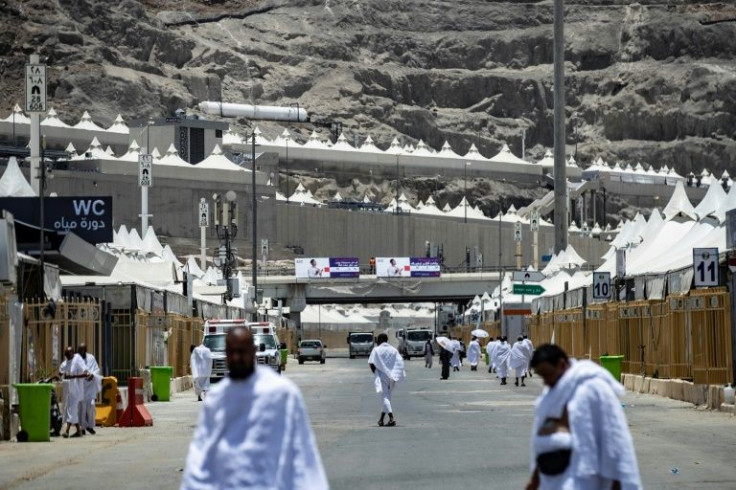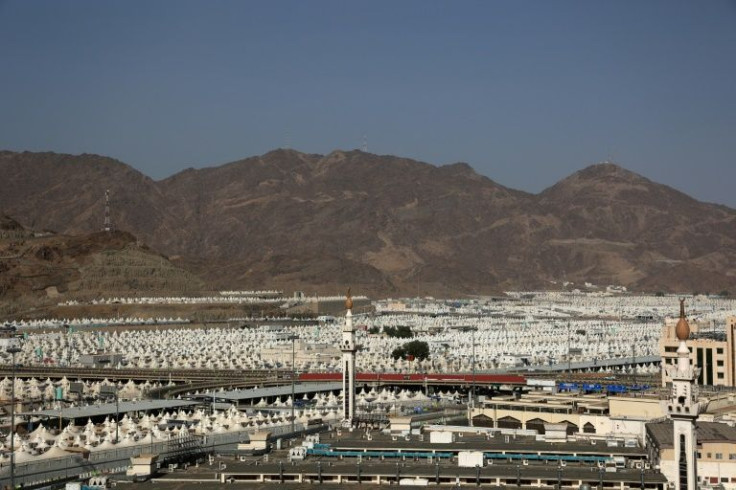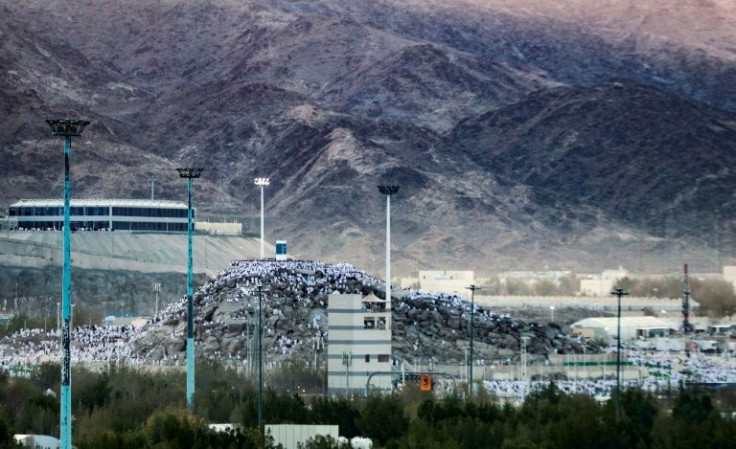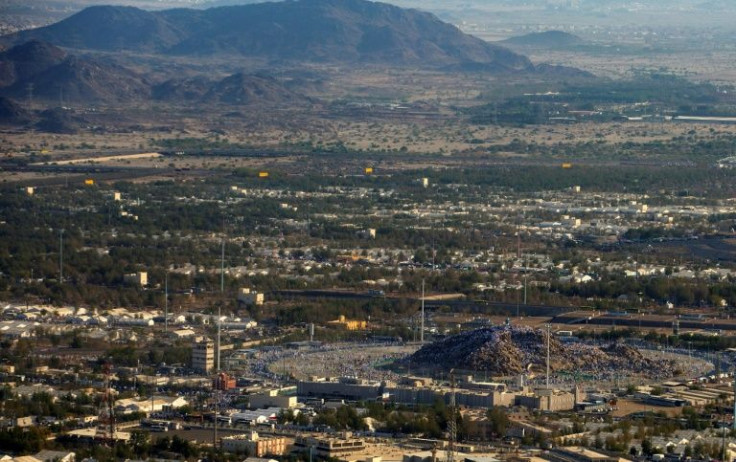Pilgrims Pack Mount Arafat For Climax Of Biggest Covid-era Hajj
Huge crowds of robed Muslim pilgrims prayed on Saudi Arabia's Mount Arafat on Friday, the climax of the biggest hajj pilgrimage since the pandemic forced drastic cuts in numbers for two years.
Groups of worshippers, many holding umbrellas against the fierce sun, recited verses from the Koran on the rocky rise where the Prophet Mohammed is believed to have given his final sermon.
Prayers on Mount Arafat are the highlight of the annual pilgrimage, capped this year at one million people including 850,000 from abroad.

Authorities said Friday that the number of pilgrims reached 899,353, including 779,919 from outside the kingdom.
Pilgrims, many in white robes, chanted "Oh God, here I am" as they reached Mount Arafat on foot or in buses from their nearby tents.
They will sleep under the stars in nearby Muzdalifah before performing the symbolic "stoning of the devil" ceremony on Saturday.

"I am so happy to be here... This is the biggest hajj in the coronavirus era, but it isn't big enough yet," Egyptian pilgrim Saad Farhat Khalil, 49, told AFP.
"If the Saudis allowed more, 10 million would have come," he added.
Entry roads were packed with worshippers as helicopters buzzed overhead and volunteers handed out water and collected rubbish.

The hajj, usually one of the world's largest annual religious gatherings, is among the five pillars of Islam and must be undertaken by all Muslims with the means at least once in their lives.
In 2019, as in previous years, some 2.5 million Muslims from around the world took part, a figure that dropped to a few thousand in 2020 and 60,000 in 2021.
State media platforms said some 21 percent of this year's pilgrims were from Arab countries and more than 53 percent were from Asia, while 412,895 women attended.

"In 2020 I thought I would never do hajj. It seemed like the end of time. But here we are today, God is great," said Bassam Mohammed, another Egyptian pilgrim.

Minutes before sunset, huge crowds started walking towards their tents before taking buses or continuing their journey on foot.
The remaining pilgrims descended Mount Arafat as they recited their last prayers, some breaking into tears, while worshippers thronged nearby streets.
The large crowds have spurred fears Covid will spread, especially after many pilgrims were maskless at the Grand Mosque in Mecca, despite reports that face coverings would be mandatory.

A Covid resurgence in the region has seen some Gulf countries tighten restrictions.
All pilgrims were required to submit proof of vaccination and negative PCR tests.
Health ministry spokesman Dr Muhammad al-Abdulaali said Thursday evening that so far no Covid cases had been detected among the pilgrims, though it was unclear what testing was taking place.
The pilgrimage can be physically draining even in ideal conditions, but worshippers this year faced an added challenge: scorching sun and temperatures well over 40 degrees Celsius (104 Fahrenheit).
On Friday, the temperature hit 44 degrees Celsius at Mount Arafat, state-run Al-Ekhbariya television reported.
Islam forbids men from wearing hats once the rites start, and many have been seen shielding themselves with umbrellas, prayer mats and even, in one case, a small bucket filled with water.
Women, meanwhile, are obliged to cover their heads with scarves.
"We can tolerate (the heat)... The more we tolerate, the more our pilgrimage is accepted," Laila, a 64-year-old Iraqi pilgrim who gave only her first name, told AFP.
Saudi officials have touted their preparations for the extreme conditions, highlighting the hundreds of hospital beds allocated for heatstroke patients and the "large number of misting fans" provided.
Dozens of trucks distributed umbrellas, water bottles and small fans.
The National Centre for Meteorology, which has set up an office in Mina, sent mobile phone messages to pilgrims, urging them to avoid outdoor rituals at certain times of the day.
On Saturday, pilgrims will take part in the "stoning", the last major ritual of the hajj which has previously led to deadly stampedes, as hundreds of thousands converge on a small space.
They will then return to the Grand Mosque in Mecca to perform a final "tawaf" or circling of the Kaaba, the cubic structure that is the focal point of Islam.
Eid al-Adha, the feast of the sacrifice that begins on Saturday, marks the end of hajj.
© Copyright AFP 2024. All rights reserved.





















